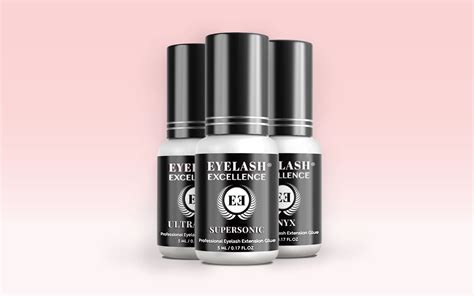502: Your Guide to Choosing the Perfect Eyelash Extension Glue

Eyelash extensions have taken the beauty industry by storm, revolutionizing the way we enhance our eyes and achieve a glamorous, fluttery look. At the heart of this transformative process lies a crucial ingredient: eyelash extension glue. Choosing the right glue is paramount to ensure the longevity, safety, and overall success of your eyelash extensions.
Types of Eyelash Extension Glue
- Cyanoacrylate-Based Glue: The most common type, cyanoacrylate-based glue adheres quickly and is highly resistant to water. It is suitable for dry to normal environments.
- Acrylic Glue: Acrylic-based glue offers a slower drying time, allowing for more precise application. It is recommended for clients with sensitive eyes or skin.
Factors to Consider When Choosing Glue
- Adhesion Time: The time it takes for the glue to bond, typically ranging from 1 to 5 seconds.
- Retention Time: The period for which the extensions remain adhered to the natural lashes, typically lasting 2 to 6 weeks.
- Fumes: The release of chemical vapors during application. Low-fume glues minimize irritation.
- Flexibility: The ability of the glue to withstand movement without cracking or breaking.
- Viscosity: The thickness of the glue, influencing ease of application and drying time.
- Always perform a patch test: Apply a small amount of glue to a discreet area of the skin 24 hours before treatment to check for allergic reactions.
- Ensure proper ventilation: Use a fan or open a window during application to reduce exposure to fumes.
- Avoid contact with eyes and skin: Apply glue only to the base of the natural lashes, using a precision brush.
- Store glue properly: Keep glue in a cool, dry place, away from direct sunlight or heat.
- Client’s Health: Opt for hypoallergenic and low-fume glues for clients with sensitive eyes or skin.
- Environment: Use cyanoacrylate-based glue in dry environments and acrylic glue in humid environments.
- Desired Retention Time: Select glue with a retention time that aligns with the client’s desired wear schedule.
- Technician’s Skill Level: Choose glue with a drying time that complements the technician’s experience.
- Cleanse natural lashes: Remove any dirt or makeup to ensure good adhesion.
- Isolatorology: Isolate natural lashes to prevent multiple lashes from bonding together.
- Small glue drops: Use tiny droplets of glue to avoid clumping.
- Proper curing: Allow sufficient time for the glue to dry before manipulating the extensions.
Cyanoacrylate-Based Glue
Pros:
- Quick adhesion time
- Strong bond
- Suitable for most clients
Cons:
- High fumes
- Can be irritating to sensitive eyes
Acrylic Glue
Pros:
- Slower drying time
- Less irritating
- Flexible bond
Cons:
- Lower adhesion time
- May not be as durable
The versatility of eyelash extension glue extends beyond its traditional use. Here are some innovative ideas for leveraging its adhesive properties:
- Nail Art: Create intricate designs on nails by using glue to affix rhinestones or other embellishments.
- Jewelry Repair: Bond broken or loose jewelry pieces with invisible repairs using a drop of glue.
- Temporary Tattoo Removal: Remove temporary tattoos by rubbing them with a cotton ball soaked in glue.
- Fiber Optics: Assist in the precision alignment of fiber optic cables with a tiny amount of glue.
Choosing the right eyelash extension glue is essential for achieving beautiful, long-lasting results. By understanding the fundamentals, safety considerations, and application techniques, eyelash technicians can ensure the comfort, satisfaction, and safety of their clients. With a little creativity, glue can also be a valuable tool for a range of other applications. Embrace the power of glue and elevate your eyelash extension game today!
